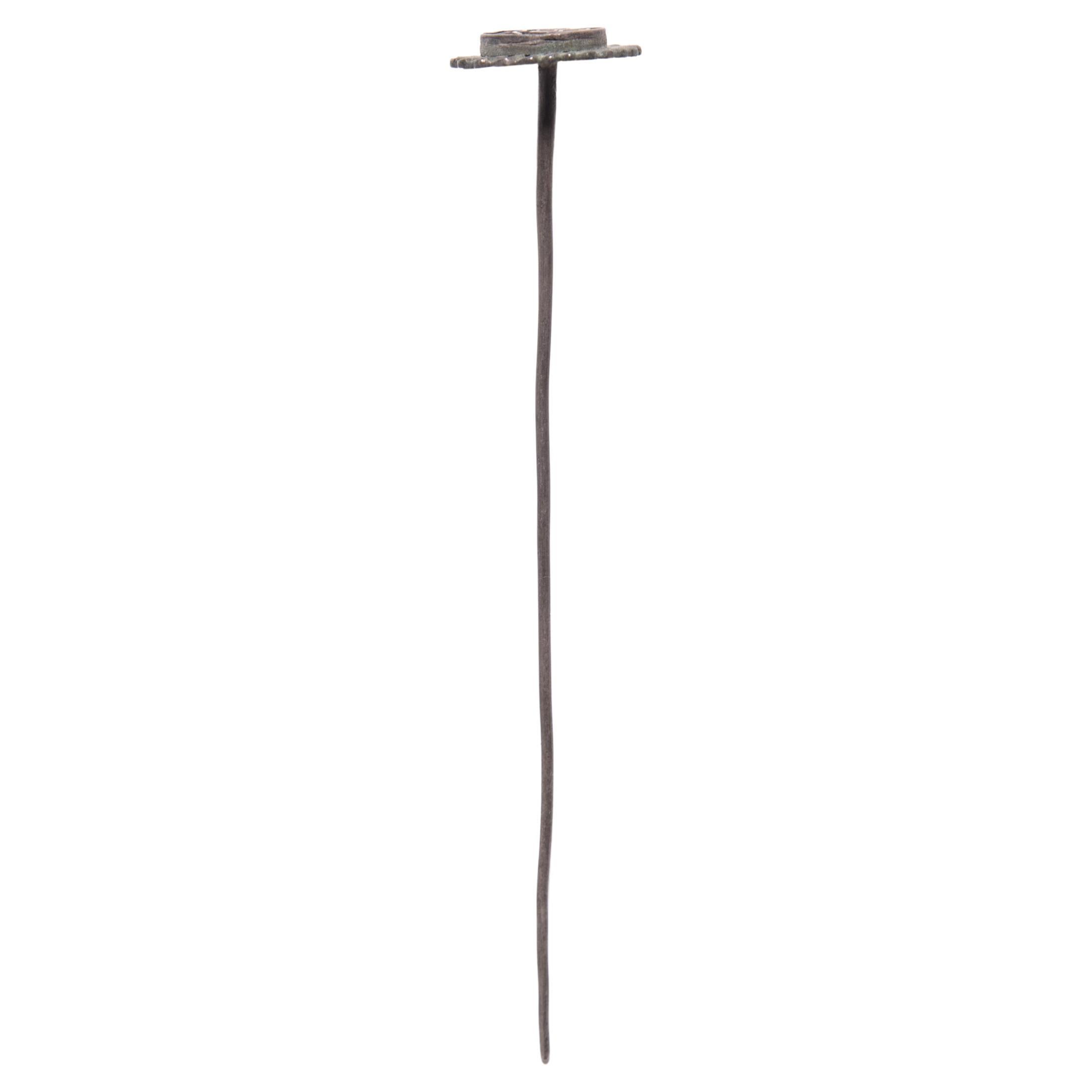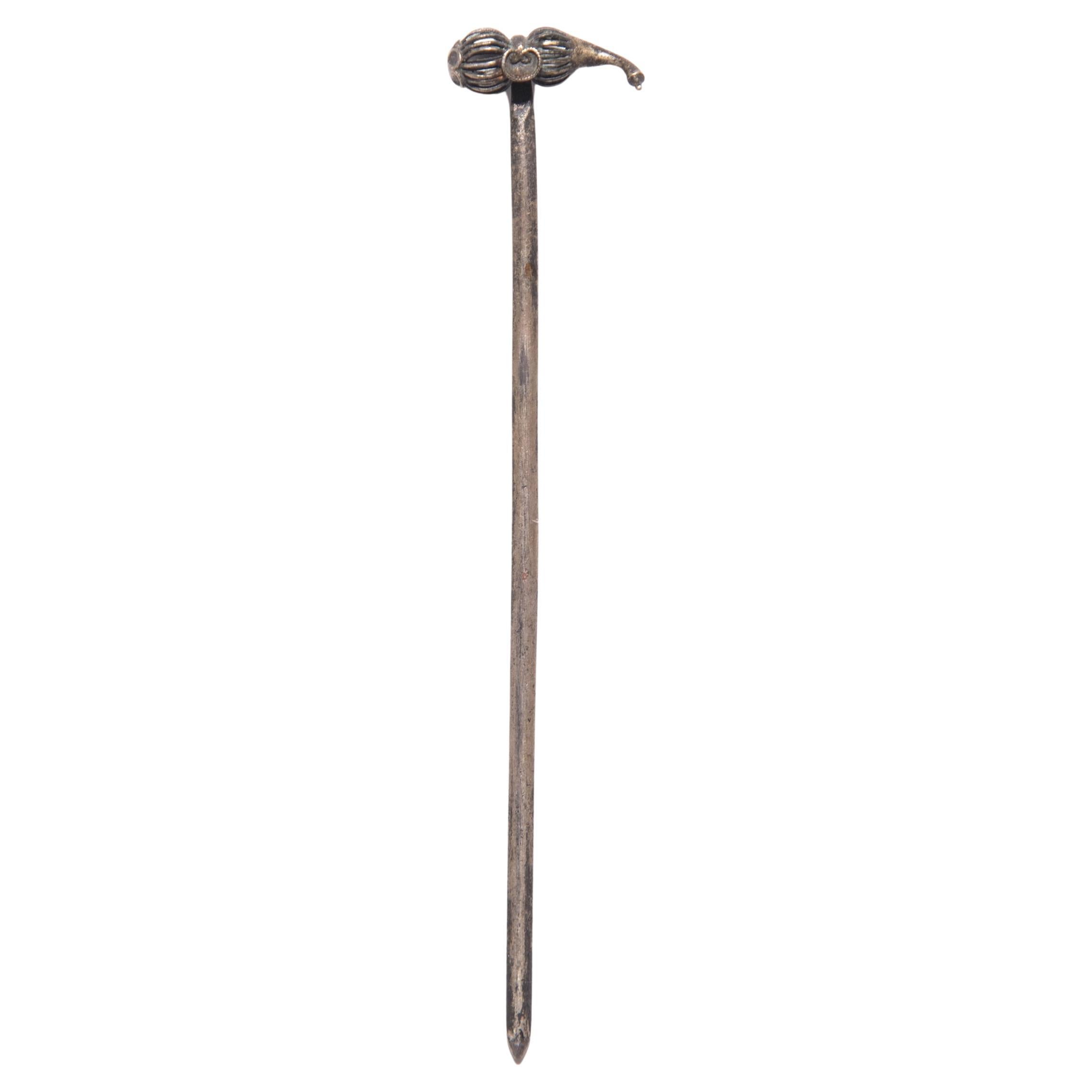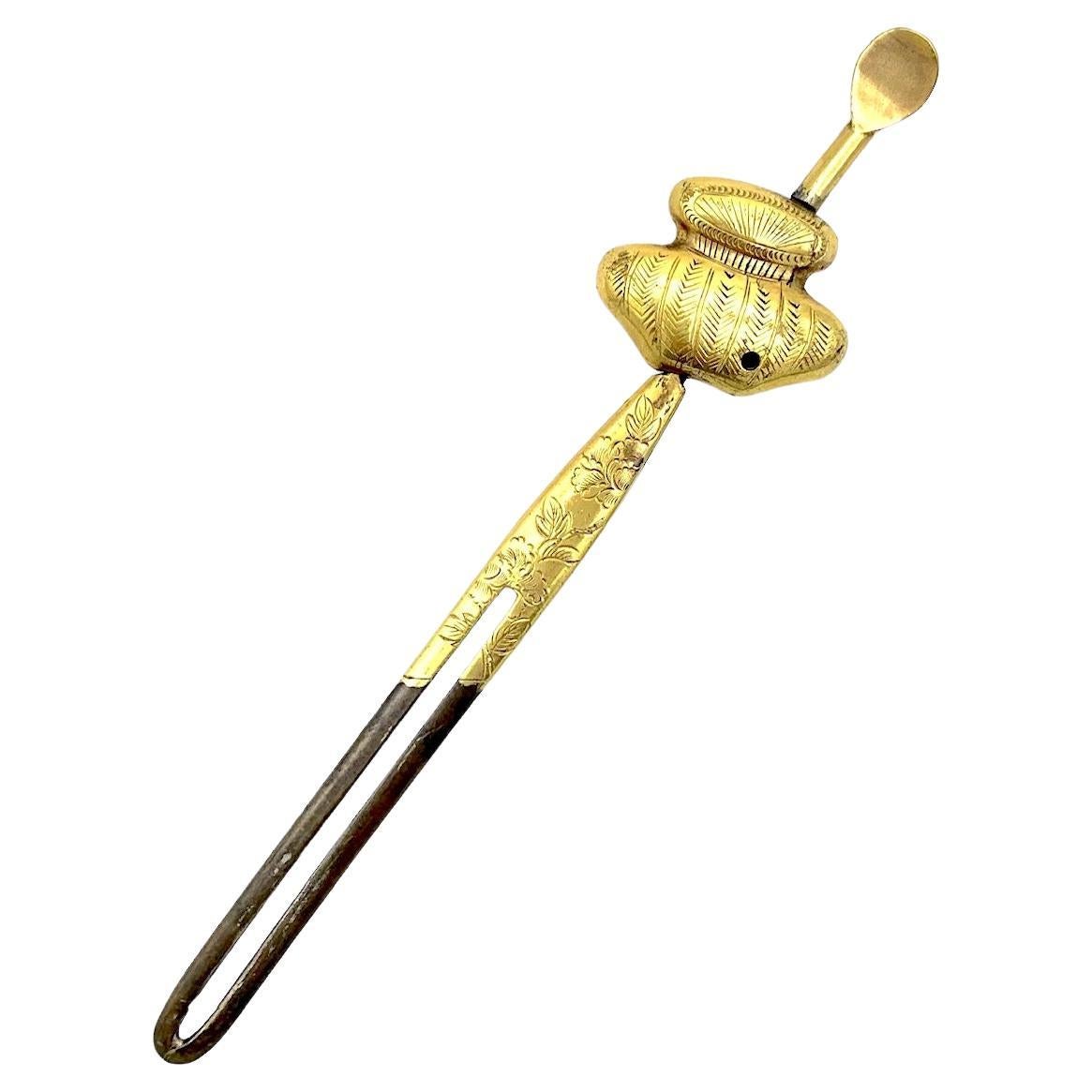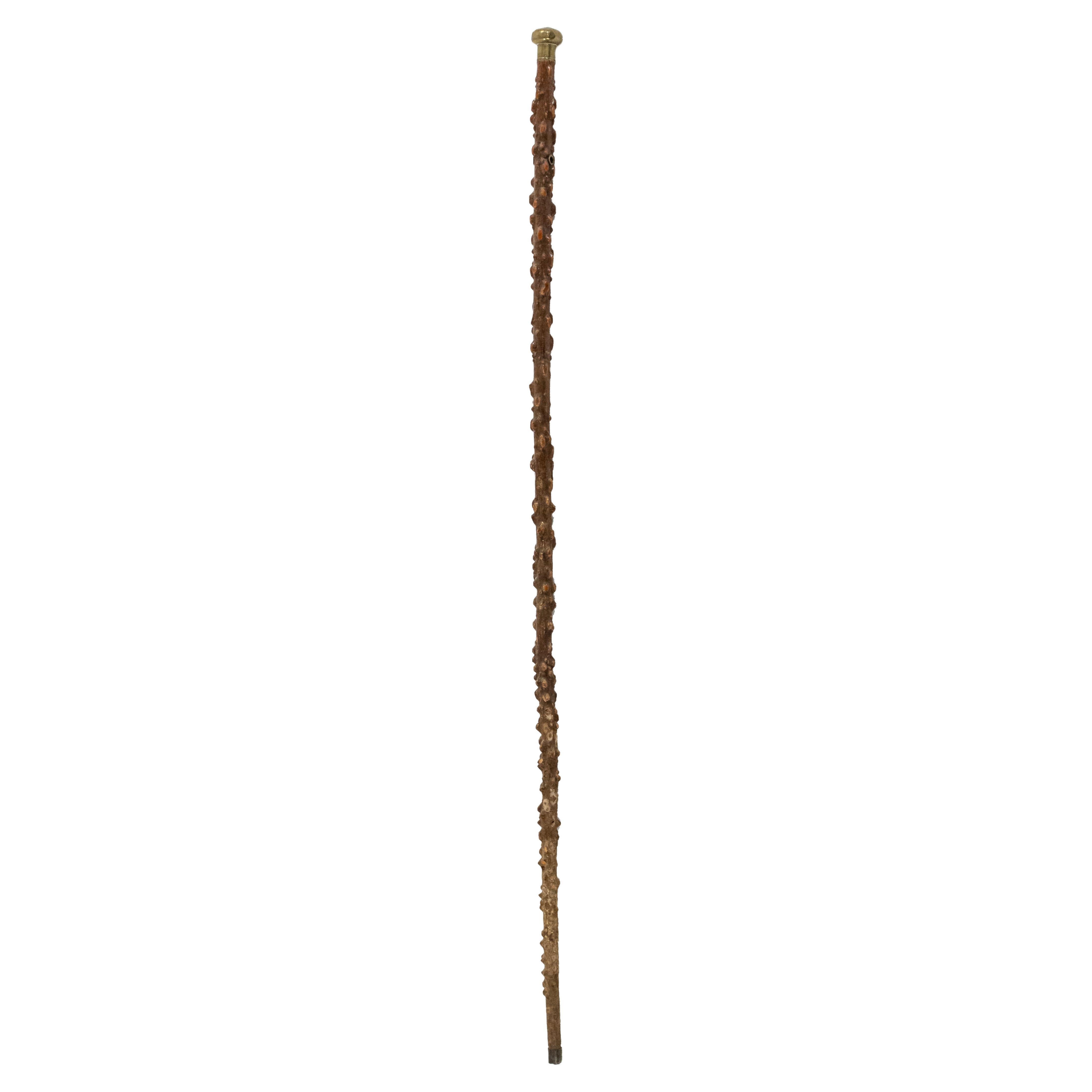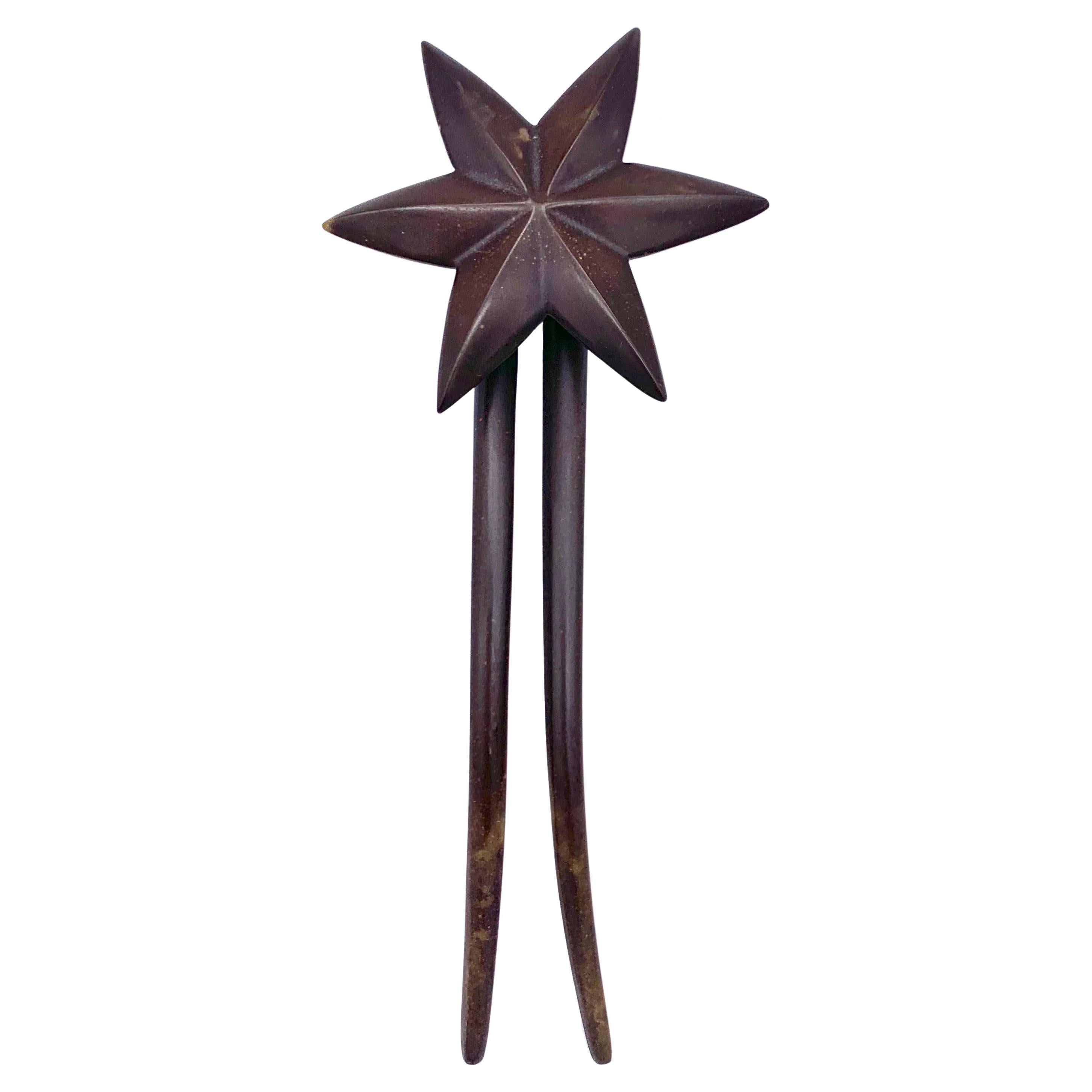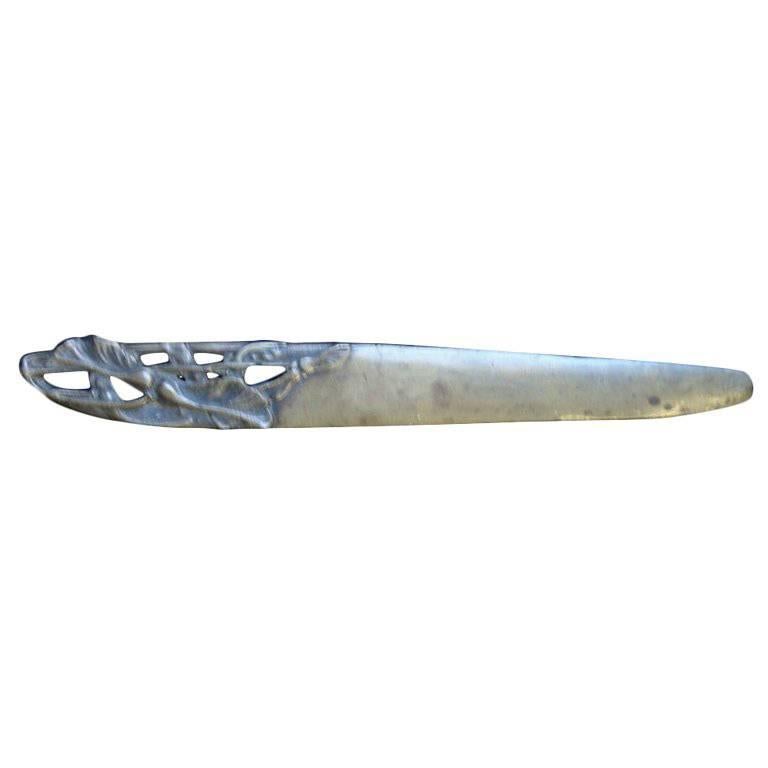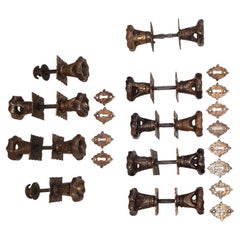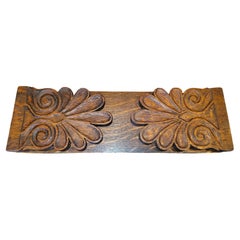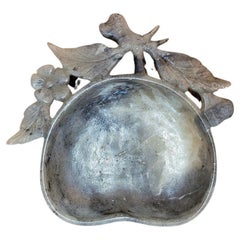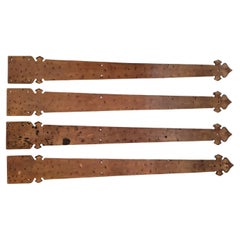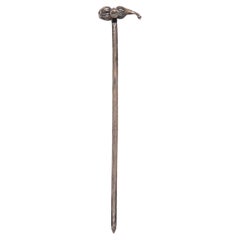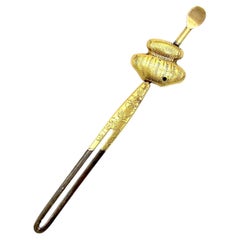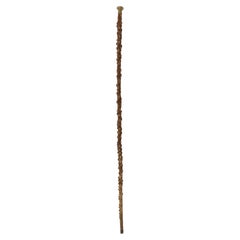Items Similar to Rare 19th Century English Tunbridgeware Hair Pin or Slide
Want more images or videos?
Request additional images or videos from the seller
1 of 13
Rare 19th Century English Tunbridgeware Hair Pin or Slide
$360
£276.94
€321.44
CA$507.69
A$568.69
CHF 298.70
MX$6,915.13
NOK 3,782.50
SEK 3,590.61
DKK 2,399.06
About the Item
PRESENTING an EXTREMELY UNIQUE and RARE 19C British Tunbridgeware Hair Pin/Bobbin or Slide.
This slide is unlike any of it’s kind we have seen before, it is a VERY RARE survivor.
From circa 1860 – 80 and made in Tunbridge Wells, England.
Made of walnut with gorgeous marquetry inlay on the entirety of the front with classic Tunbridgeware micro-mosaic all over the front. The rear is walnut.
The marquetry inlay appears to be various different woods, namely, maple, walnut and satinwood.
Would have been worn in a Lady’s hair bun with the micro-mosaic facing forward.
This would have belonged to a VERY ELEGANT LADY in the mid to late 19th Century.
Tunbridge ware is a form of decoratively inlaid woodwork, typically in the form of boxes, that is characteristic of Tonbridge and the spa town of Royal Tunbridge Wells in Kent in the 18th and 19th centuries. The decoration typically consists of a mosaic of many very small pieces of different coloured woods that form a pictorial vignette. Shaped rods and slivers of wood were first carefully glued together, then cut into many thin slices of identical pictorial veneer with a fine saw. Elaborately striped and feathered bandings for framing were pre-formed in a similar fashion.
There is a collection of Tunbridge ware in the Tunbridge Wells Museum and Art Gallery in Tunbridge Wells.
The famous makers of Tunbridge ware were in the Tunbridge Wells area of Kent; their most notable work was from circa 1830-1900.
Early makers of Tunbridge ware, in Tunbridge Wells in the mid-18th century, were the Burrows family, and Fenner and Co. In the 19th century, around 1830, James Burrows invented a technique of creating mosaics from wooden tesserae. Henry Hollamby, apprenticed to the Burrows family, set up on his own in 1842 and became an important manufacturer of Tunbridge ware, employing about 40 people.
Edmund Nye (1797–1863) and his father took over the Fenner company when William Fenner retired in 1840, after 30 years in partnership with him. Thomas Barton (1819–1903), previously apprenticed at the Wise factory, joined the Nyes in 1836, and worked as Nye’s designer; he took over the business in 1863 and continued there until his death.
In Tonbridge (near to Tunbridge Wells), George Wise (1703–1779) is known to have had a business in 1746. It continued with his son Thomas, and Thomas’s nephew George (1779–1869), who took over in 1806. In its early years the company made articles such as workboxes and tea caddies with prints of popular views; later items had pictures created from mosaics. Their workshop in Tonbridge, Wise’s Tunbridge Ware Manufactory, was next to the Big Bridge over the Medway; the building was demolished in 1886 to widen the approach to the bridge.
Tunbridge ware became popular with visitors to the spa town of Tunbridge Wells, who bought them as souvenirs and gifts. Articles included cribbage boards, paperweights, writing slopes, snuffboxes and glove boxes.
At the Great Exhibition of 1851, Tunbridge ware by Edmund Nye, Robert Russell and Henry Hollamby was shown; Edmund Nye received a commendation from the judges for his work. He exhibited a table depicting a mosaic of a ship at sea; 110,800 tesserae were used in making the picture.
The manufacturers of Tunbridge ware were cottage industries, and they were no more than nine in Tunbridge Wells and one in Tonbridge. The number declined in the 1880s; competent craftsmen were hard to find, and public tastes changed. After the death of Thomas Barton in 1903 the only surviving firm was Boyce, Brown and Kemp, which closed in 1927.
Marquetry was an old technique which was continued by Nye and Barton to create images such as birds or butterflies.
‘Green Oak’ as caused by the fungus Chlorociboria aeruginascens.
Stickware and half-square mosaic was invented by James Burrows in about 1830: a bunch of wooden sticks of different colours, each having triangular or diamond-shaped cross section, were tightly glued together; in the case of stickware, the resulting block was dried, then turned to form an article such as the base of a pincushion. For half-square mosaic, thin slices were taken from the composite block, and applied to a surface.
Tesselated mosaic, was a development by James Burrows of half-square mosaic; it was adopted by George Wise and Edmund Nye. Minute tesserae were used to form a wide variety of geometric and pictorial designs.
Many sorts of wood were used for the various colours; about 40 were in regular use. Only natural colors were used; green was provided by “green oak”, produced by the action of fungus on fallen oak. Designs for articles were often taken from designs of Berlin wool work.
- Dimensions:Height: 6.75 in (17.15 cm)Width: 1 in (2.54 cm)Depth: 0.2 in (5.08 mm)
- Style:High Victorian (Of the Period)
- Materials and Techniques:
- Place of Origin:
- Period:
- Date of Manufacture:1860-1880
- Condition:Wear consistent with age and use. Very good original condition. No loss of mosaic.
- Seller Location:Dallas, TX
- Reference Number:1stDibs: LU3978118877992
About the Seller
4.9
Vetted Professional Seller
Every seller passes strict standards for authenticity and reliability
Established in 2015
1stDibs seller since 2018
390 sales on 1stDibs
Typical response time: <1 hour
- ShippingRetrieving quote...Shipping from: Dallas, TX
- Return Policy
Authenticity Guarantee
In the unlikely event there’s an issue with an item’s authenticity, contact us within 1 year for a full refund. DetailsMoney-Back Guarantee
If your item is not as described, is damaged in transit, or does not arrive, contact us within 7 days for a full refund. Details24-Hour Cancellation
You have a 24-hour grace period in which to reconsider your purchase, with no questions asked.Vetted Professional Sellers
Our world-class sellers must adhere to strict standards for service and quality, maintaining the integrity of our listings.Price-Match Guarantee
If you find that a seller listed the same item for a lower price elsewhere, we’ll match it.Trusted Global Delivery
Our best-in-class carrier network provides specialized shipping options worldwide, including custom delivery.More From This Seller
View AllSet of 9 Art Nouveau Hand Beaten Bronze Door Handles with Plates
Located in Dallas, TX
Presenting a gorgeous and unique set of 9 Art Nouveau hand beaten bronze door handles with plates.
Amazingly complete set!
Probably made in the US circa 1910 and most definitely influenced by the English New Lyn School of Arts and Crafts Era hand-beaten copper pieces.
These are without doubt Art Nouveau in style and from the period.
They were salvaged from a Mansion in Dallas that was built in 1929.
We are of the opinion that these were ‘custom made’ pieces.
They are unmarked and unsigned and they appear to be made of bronze with a brass and copper mix.
The Set consists of:
6 double sided classic door handles/knobs with central lock pin – suitable for door of a minimum of 1.5 inches thick but can accommodate thicker door. Each of these 6 also come with their original back plates (x12) and keyhole covers (x12) for either side of the door.
2 handles/knobs with central lock pin but with small knob on backside- suitable for door of a minimum of 1.5 inches thick but can accommodate thicker door. This pair also has their original (front) back plates and a Yale back plate on the rear.
1 double sided turning door handles/knobs with turning central lock pin – suitable for door of a minimum of 1.5 inches thick but can accommodate thicker door. This also comes with it’s original back plates (x2).
1 Spare Keyhole cover, 2 spare back plates, 1 Spare plain Bronze Turning Knob with pin and 2 spare Hand-beaten Bronze Turning Knobs with pins.
TOTAL OF 63 PIECES!
These were originally used in the Mansion we rescued them from, with Yale Mortice Locks (a number of which we have listed separately in this category).
The fact that they are hand beaten bronze, is highly unusual in itself as most of these types of pieces were copper.
Also, we rescued these from the now demolished Mansion along with the UNIQUE hand beaten Bronze Door Straps...
Category
Early 20th Century American Art Nouveau Architectural Elements
Materials
Bronze
British Tiger Oak Renaissance Revival Book Slide or Stand
Located in Dallas, TX
Presenting a lovely Early 20C British Tiger Oak Renaissance Revival Book Slide.
Made in England circa 1900-20 as part of the Renaissance Revival trend of that period.
PRESENTING A ...
Category
Antique Late 19th Century English Renaissance Revival Magazine Racks and...
Materials
Oak
20C Chinese Soapstone Polished Ring Dish
Located in Dallas, TX
Presenting a lovely 20C Chinese soapstone polished ring dish.
Made in China in the early 20th century circa 1930.
This is a polished mottled gray soa...
Category
Early 20th Century Chinese Chinese Export Sculptures and Carvings
Materials
Soapstone
Set of 4 Art Nouveau Hand Beaten Bronze Decorative Door Straps
Located in Dallas, TX
PRESENTING a GORGEOUS AND UNIQUE Set of 4 Art Nouveau Hand Beaten Bronze Decorative Door Straps.
Large straps, with each being 30.25 inches long.
Pro...
Category
Early 20th Century American Art Nouveau Architectural Elements
Materials
Bronze
Pair of Art Nouveau Hand Beaten Bronze Door Push Plates
Located in Dallas, TX
Presenting a gorgeous and unique pair of art nouveau hand beaten bronze door push plates.
Each being 13.5 inches long.
Probably made in the US c...
Category
Early 20th Century American Art Nouveau Architectural Elements
Materials
Bronze
Early 20th Century Carved and Gilded Wall Light Sconce by Thorvald Strom
Located in Dallas, TX
Presenting a gorgeous early 20th century carved and gilded wall light sconce by Thorvald Strom.
Hand carved by Thorvald Strom.
Thorvald Strom w...
Category
Early 20th Century Canadian Art Nouveau Wall Lights and Sconces
Materials
Gesso, Giltwood
You May Also Like
Chinese Good Fortune Hairpin, c. 1900
Located in Chicago, IL
Although eyes were certainly drawn to the high, fan-shaped headdresses that Qing-dynasty women affixed to back of their heads, it was the finishing touch of a hairpin or two that completed the look. This silver hairpin ends in a round floral medallion framing the decorative Fu (?) character for "good...
Category
Antique Mid-19th Century Chinese Qing Collectible Jewelry
Materials
Silver
Chinese Double Gourd Hairpin, c. 1900
Located in Chicago, IL
Although eyes were certainly drawn to the high, fan-shaped headdresses that Qing-dynasty women affixed to back of their heads, it was the finishing touch of a hairpin or two that com...
Category
Antique Late 19th Century Chinese Qing Collectible Jewelry
Materials
Silver
Antique 19th Century Japanese Hair Ornament Hairpin Gilt Metal Cast Metal
Located in Munich, Bavaria
This charming hair ornament was created out of cast metall in the last quarter of the nineteenth century. The visible part of the hair ornament is designed as an elaborate Japanese c...
Category
Antique 1880s Japanese Vanity Items
Materials
Gilt Metal
English Victorian Briarwood and Brass Cane
Located in Queens, NY
English Victorian style simple briarwood cane with small brass top and leather cord.
Category
Antique Late 19th Century Victorian Sports Equipment and Memorabilia
Materials
Brass
Victorian 1880 Star Hair Pin Vulcanite Gutta Percha
Located in Munich, Bavaria
A vulcanite star is mounted onto a hair pin in made from the same material.
Vulcanite, also called gutta percha was made from rubber.
Category
Antique 1880s English Victorian More Jewelry
Art Nouveau Bronze Letter Opener
Located in NYC, NY
An Art Nouveau bronze letter opener with beautiful carvings.
Category
Early 20th Century Portuguese Art Nouveau Desk Accessories
Materials
Bronze
More Ways To Browse
Mid Century Pin
Diamond Hair
Victorian Hair
Hair Pin
Hair Pins
Victorian Slide
Diamond Butterfly Pin
Antique Hair Pin
Mosaic Bird
Victorian Hair Art
19th Century Bobbin Furniture
Antique Wood Hand Saws
Micro Mosaics 19th Century
Inlaid Mosaic Table
Old Antique Wood Picture Frames
Victorian Hair Pin
Sets Of Framed Bird Prints
Victorian Antique Hair Pins
